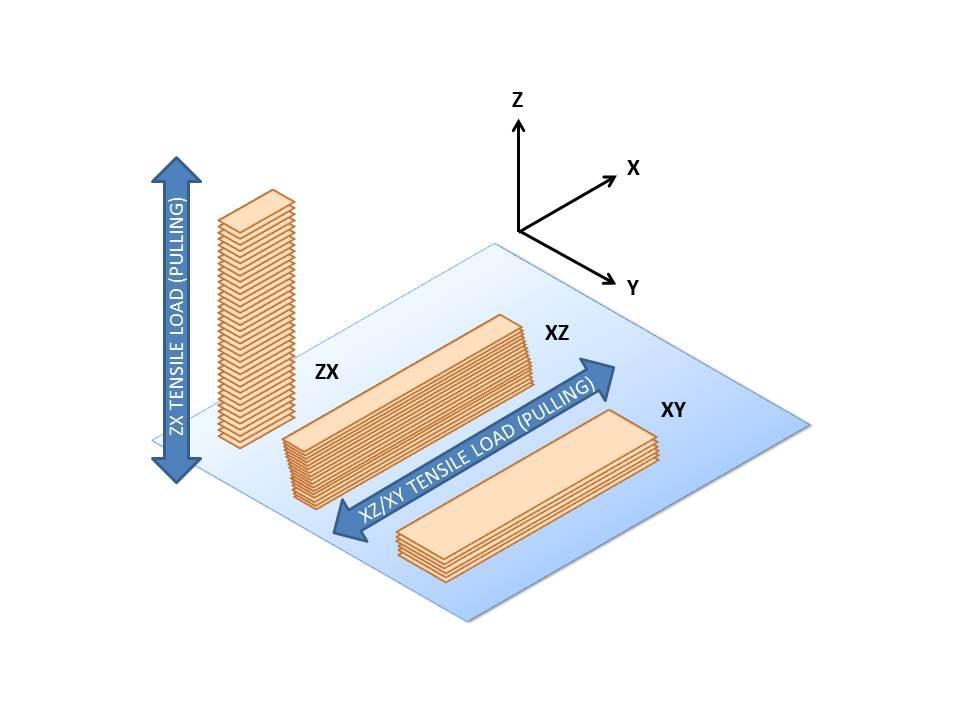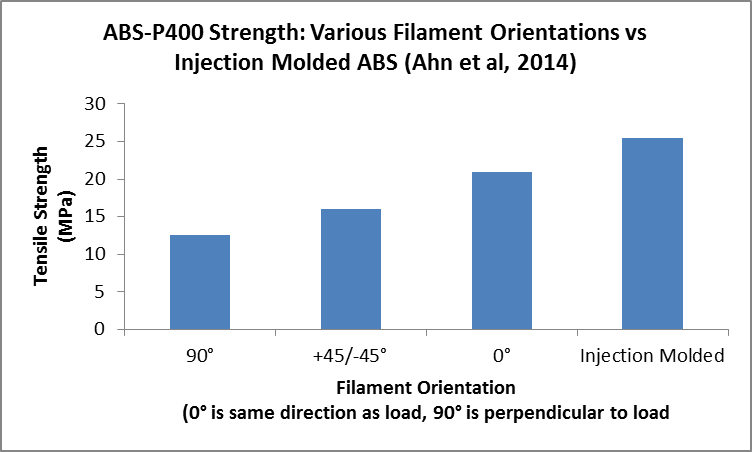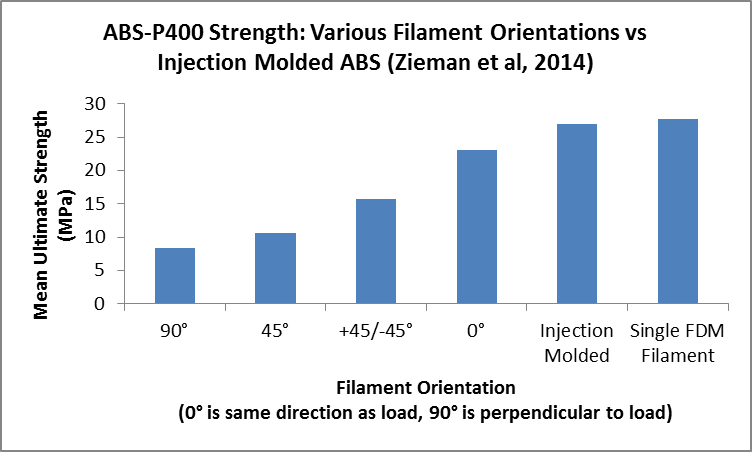 These days it’s easy enough to unpack that new 3D printer and set off to work with your starter pack of filament, design files ready to go and models on your mind. Or maybe you are printing from a library or a university lab where all of the supplies are already onsite. Your goal is to see a successful print to fruition. But this gets a lot more interesting when you become a bit of a materials scientist, which undoubtedly—and perhaps unexpectedly—you will find happening when you begin to have more demands and curiosity as a user. And if you are working from the industrial front, knowing your materials is not a choice, but a requirement.
These days it’s easy enough to unpack that new 3D printer and set off to work with your starter pack of filament, design files ready to go and models on your mind. Or maybe you are printing from a library or a university lab where all of the supplies are already onsite. Your goal is to see a successful print to fruition. But this gets a lot more interesting when you become a bit of a materials scientist, which undoubtedly—and perhaps unexpectedly—you will find happening when you begin to have more demands and curiosity as a user. And if you are working from the industrial front, knowing your materials is not a choice, but a requirement.
A great starting point for learning about materials—and printing—is ABS. Short for acrylonitrile butadiene styrene, the three monomers that make up the popular filament, this material is the main topic of ’The Ultimate Guide to ABS 3D Printing: 5 Things You Need to Know‘, just released from Made for Me, a startup headquartered in both North America and Australia. A marketplace dedicated to connecting designers with industrial 3D printing suppliers, the company was founded in 2014 and has built a global network, allowing for users to get the prototypes and parts they need printed industrially, and with a wide selection.
Made for Me is aware that sometimes you might feel like you are shooting in the dark when choosing a material, preparing for a journey through trial and error to get the desired product; however, a bit of knowledge can make the process a lot easier, and more fulfilling. The five aspects of material usage they are filling you in on here consist of:
- What ABS is made of
- How ABS is printed and how that affects your part
- How layers and filaments can be oriented
- How to orient parts for the most successful print
- What to look for in a 3D printer when you are using ABS
If you’re wondering what ABS is best for, Made for Me suggests you think Legos. They are of course, a perfect vehicle for 3D printing with ABS, showing off its strength, thanks to the acrylonitrile and styrene, with butadiene lending the toughness we are familiar with in the toy building bricks. Obviously, these multi-pronged pieces of plastic—that will have you doubled over in pain in the middle of the night should you have the misfortune to step on one—would seem nearly impossible to break. This is exactly why ABS is such a great material for many different products. While it lacks some of the benefits of a filament like PLA that is recyclable, vegetable-based, and nontoxic, ABS offers the rigidity and reliability you may be seeking over everything else.
ABS material is meant for the more ubiquitous FDM or FFF 3D printer. Here, the hot end melts the filament and then applies it on the print bed, building your model layer by layer, and allowing you to orient them simply by choosing how the part is situated on the bed. Orientation may not be something you initially give a lot of thought to or even understand, but you do need to consider several things.
How are you orienting the layers within the part? Depending on the shape, as in a small rectangular part, where you want to lay the orientation flat on the XY plane, or on edge on the XZ plane, or standing up on the ZX plane, the layers can be oriented to your preference.
“If you pull on the part from end to end, the layers will either be oriented in the same direction as the load (XY and XZ), or perpendicularly to it (ZX).”

Depending how you lay the part on the plate underneath, the layers will be oriented differently within the part.
What you need to consider is what impact orientation is going to have on the integrity of your 3D printed object. As the Made for Me team points out in their new guide, orientation will play a substantial role in the strength of your part. To demonstrate this, they point out how two different studies examining Stratasys ABS-P400 prove the point:
“In both cases, parts printed with filaments at 0-degree orientation performed similarly to injection molded ABS, while parts printed with filaments at other orientations became progressively weaker.”
See figures two and three to understand more about how when the filament is aligned with the load, tensile strength can actually rival that of parts made though injection molding, as well as showing a consistent improvement in strength. This means you can use 3D printed ABS parts for functional testing, but as the guide points out, filaments need to be oriented “along the direction of load (0 degrees) for maximum strength.”
Next, you need to consider fatigue, as seen below in figure four, because this is another element which will determine the integrity of your part. With orientation obviously becoming more and more important as the load increases, users who paid close attention to orienting filament saw that their parts were able to withstand three times more cycles.
“As can be expected, orienting filaments perpendicular to the load is a bad idea,” states the Made for Me team in their printing guide. “However, these tests show that completely aligning each layer’s filaments with the load is not actually best. Instead, criss-crossing layers of +45/-45 degree filament orientations are substantially better.”
Tips for success:
- Make sure that layers run parallel to the load, keeping in mind the example of wood grain, and how it’s weakened substantially when pulled apart perpendicularly.
- When you are in the process of making your design, decide on filament orientation early on. Consider what your requirements will be for strength and fatigue properties and how you will want to control filament orientation layer by layer.
Extra help: For a much stronger part, and especially if you need a functional test prototype, use 100% infill.
It’s also important to think about how orientation is going to affect the surface finish of your print. Again, if orientation is an issue, surface finish will be as well.
 Shallow slopes tend to show the delineation of layers much more clearly—something not desired—so it’s suggested that you minimize that shallowness, thus improving the aesthetics significantly. And if you’ve had any experience with manually removing supports, you’re probably aware of how this has the potential to mar or even wreck your model. If possible, try to minimize how much support (and the removal thereof) is visible.
Shallow slopes tend to show the delineation of layers much more clearly—something not desired—so it’s suggested that you minimize that shallowness, thus improving the aesthetics significantly. And if you’ve had any experience with manually removing supports, you’re probably aware of how this has the potential to mar or even wreck your model. If possible, try to minimize how much support (and the removal thereof) is visible.
It’s also very helpful, of course, if your 3D printer has dissolvable supports. And this brings up the topic of choosing the appropriate 3D printer. Is ABS most likely going to be your material of choice? Are you going to be printing for functional parts, prototypes, or a different need? While it’s expected that you are looking for quality and speed, also be sure to consider:
- Build volume – this should be your first consideration, as it makes the difference often between whether or not a print can be completed in one piece or has to be broken up into multiple pieces to complete the job.
- Layer height – this can vary by printer, and often you may find a desktop 3D printer has a more desirable thickness. Keep in mind that you may need to rely on post-processing finishes regardless.
- Temperature control – it’s no secret that temperature is a huge quotient in the success of your print. Even the smallest variations can cause issue, so if you are interested in successful, quality prints, be sure to keep in mind that you will need a thermal environment you can control. Consider how well you can control this in the build chamber, how reliable temperature controls are in terms of the hot end, and whether or not the print bed is heated.
- Types of materials supported – you may find that there are numerous ABS materials that can be used for your 3D printer, and for the desktop numerous variants and additives are available. Generally though, you will find the greatest quality and reliability in commercial printers which use materials exclusively from the manufacturer.
- Availability of dissolving support material – this is definitely worth looking into. For dissolving supports, a second print head is responsible for washing parts directly after printing, allowing for a better surface finish.
In conclusion, here are the main points you should take from the guide: It’s very important to understand, ultimately, how your 3D printer works, and how its particular features will affect your print. Choose your 3D printer with an idea of materials in mind up front. Look at what print volume will be available to you, along with layer height, temperature controls, allowance for variables, and whether or not the printer can dissolve supports. Keep in mind that ABS is a versatile material, and you may run into varying properties. It’s important to know what these are exactly, along with being able to orient your parts correctly. If you learn to do so, the reward will be strong parts that are resistant to fatigue and have a superior surface finish. Read the full guide here. Is this information that’s useful for your printing purposes? Discuss further in the ABS Printing Guide forum over at 3DPB.com.
Subscribe to Our Email Newsletter
Stay up-to-date on all the latest news from the 3D printing industry and receive information and offers from third party vendors.
You May Also Like
Gorilla Sports GE’s First 3D Printed Titanium Cast
How do you help a gorilla with a broken arm? Sounds like the start of a bad joke a zookeeper might tell, but it’s an actual dilemma recently faced by...
Nylon 3D Printed Parts Made More Functional with Coatings & Colors
Parts 3D printed from polyamide (PA, Nylon) 12 using powder bed fusion (PBF) are a mainstay in the additive manufacturing (AM) industry. While post-finishing processes have improved the porosity of...
$25M to Back Sintavia’s Largest Expansion of Metal 3D Printing Capacity Since 2019
Sintavia, the digital manufacturing company specializing in mission-critical parts for strategic sectors, announced a $25 million investment to increase its production capacity, the largest expansion to its operations since 2019....
Velo3D Initiates Public Offering in a Bid to Strengthen Financial Foundations and Drive Future Growth
Velo3D (NYSE: VLD) has been among a number of publicly traded 3D printing firms that have attempted to weather the current macroeconomic climate. After posting a challenging financial report for 2023,...



































